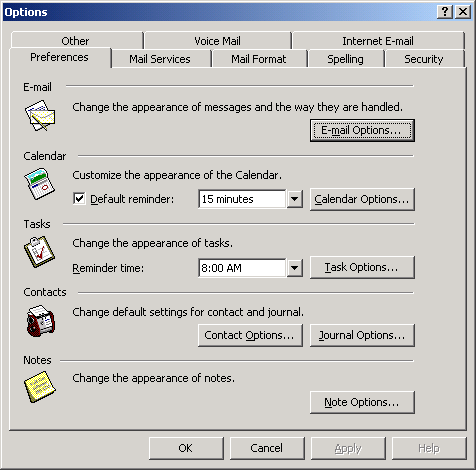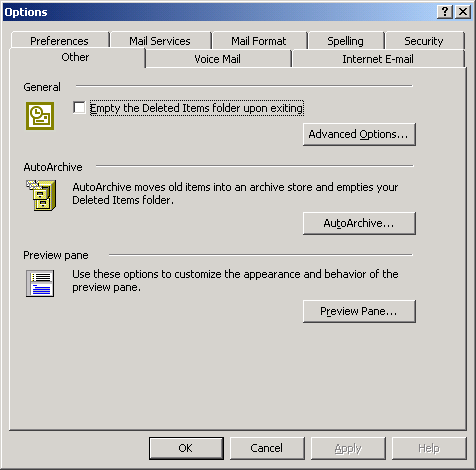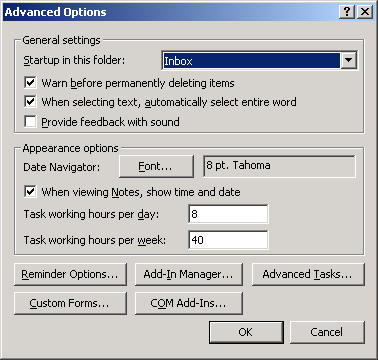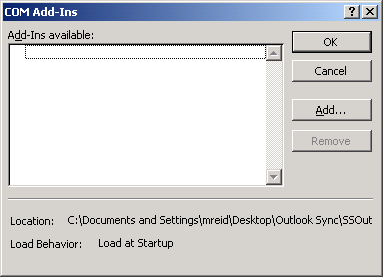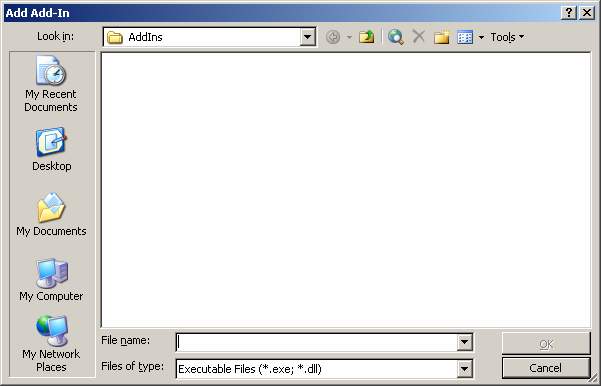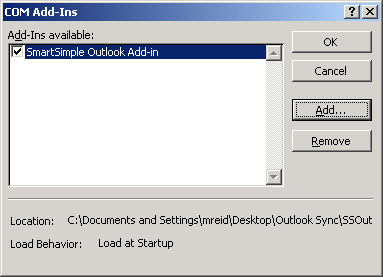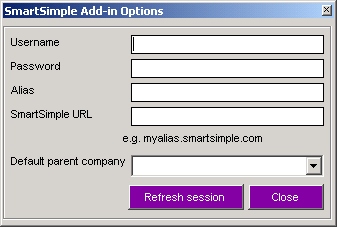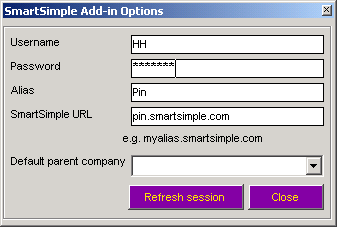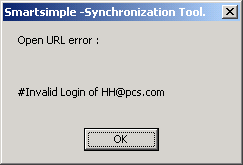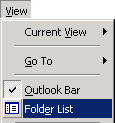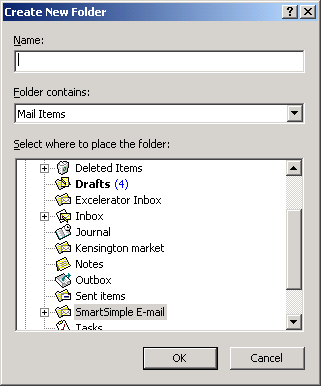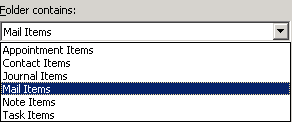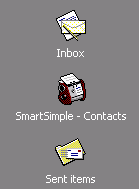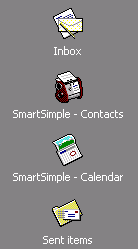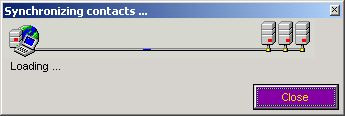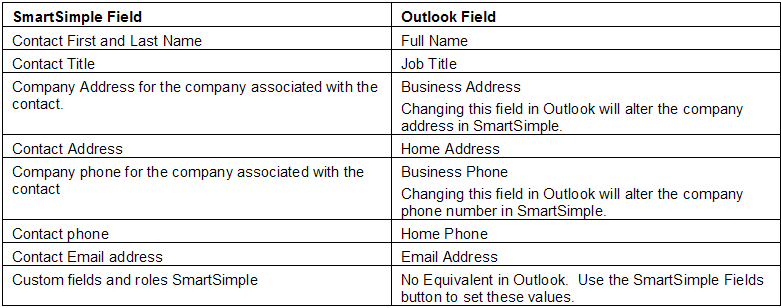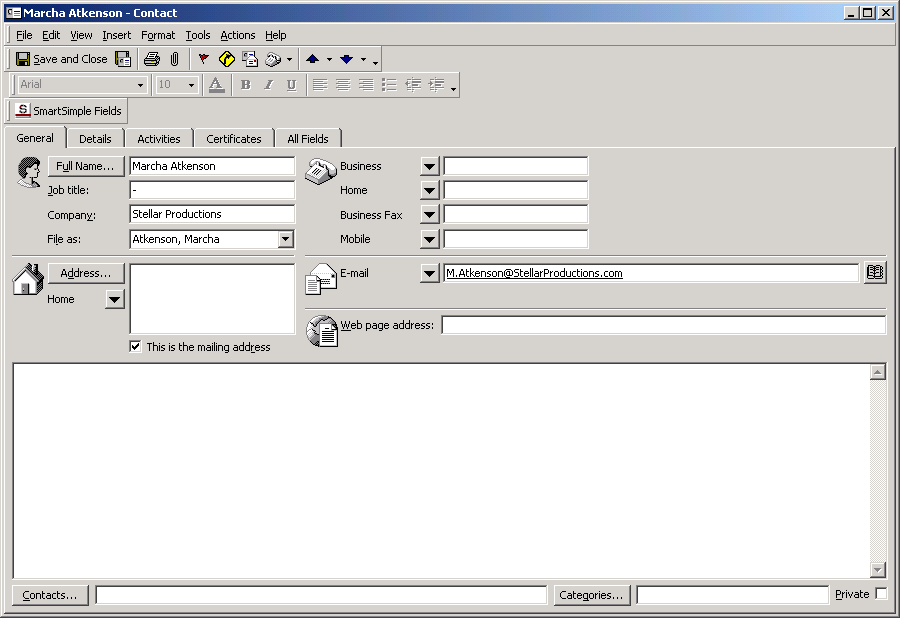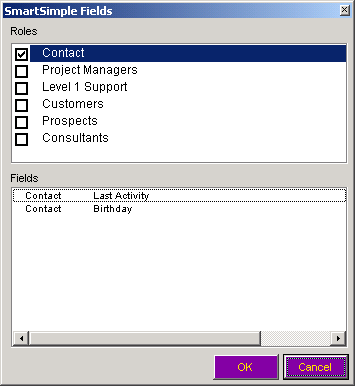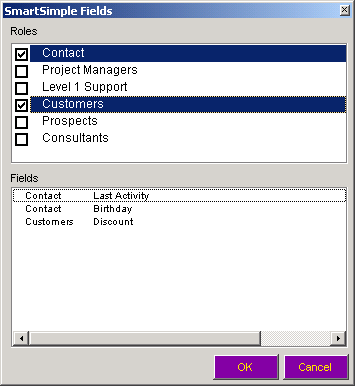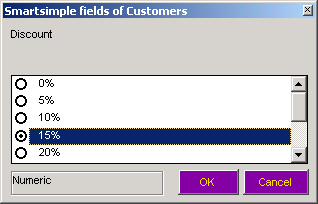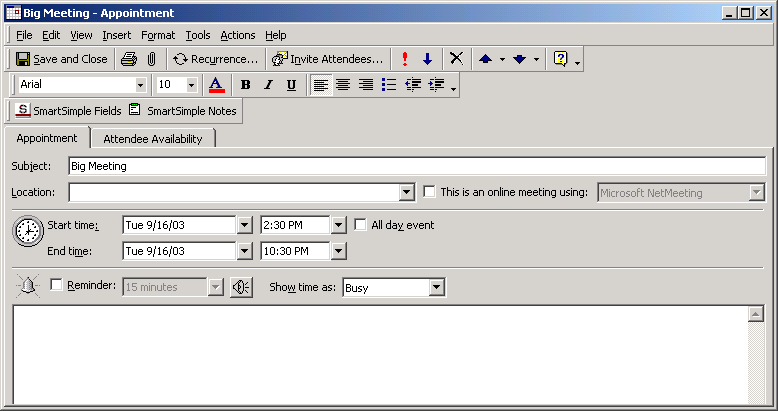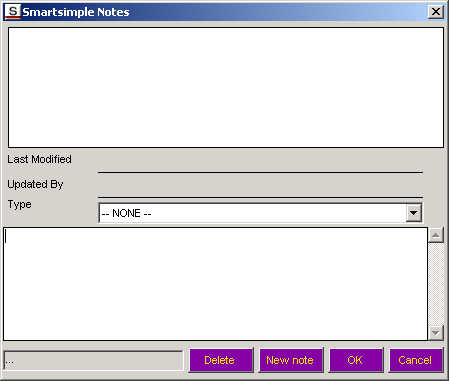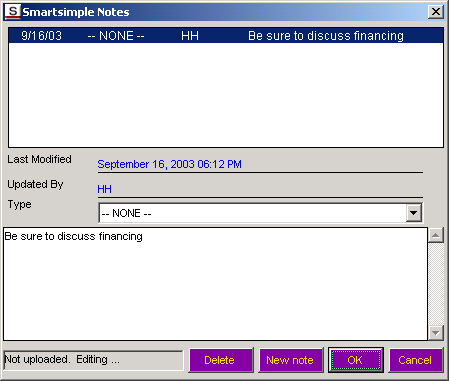Outlook Synchronization
Contents
Overview
The SmartSimple Outlook synchronization tool provides the following features:
- Maintenance of contact and company information in Outlook or SmartSimple.
Note: only companies and their associated contacts, where the company "ownership" is set to the current SmartSimple user, will be synchronized.
This feature also supports the use of custom fields and roles for contacts and multiple notes.
- Maintenance of your personal calendar in Outlook or SmartSimple.
This feature also supports multiple notes for each calendar entry, and the use of any custom calendar fields defined in SmartSimple. Notes can be created in Outlook or SmartSimple.
- If you are using the SmartSimple Applicant Tracking system, you can synchronize applicant information, including applicant resumes.
Installing Outlook Synchronization
The SmartSimple Outlook Synchronization tool works with Microsoft Outlook 2003, 2002, 2000 and Outlook 98.
Use the following step-by-step instructions to install this feature. The images in this example are taken from Outlook 2003.
1. Launch Microsoft Outlook.
2. Choose the Tools, Options menu.
3. Click the Other tab.
4. Click the Advance Options button.
5. Click the COM Add-ins button.
6. Click the Add button.
7. Browse to the folder where you stored the file SSOutlook.dll.
8. Select the file - SSOutlook.dll.
9. Click the OK button.
The Plug-In is added and selected.
10. Click the OK button on each screen until you are returned to Outlook.
The new buttons will be added to the Outlook toolbar – Settings and Sync.
You are now ready to configure the settings.
Using the Settings button
There are three buttons on the SmartSimple toolbar:
![]() - Use this button to display the SmartSimple Settings options, set your username, password, company alias and SmartSimple Web Address.
- Use this button to display the SmartSimple Settings options, set your username, password, company alias and SmartSimple Web Address.
![]() - Used to synchronize a designated Outlook Calendar folder with your SmartSimple Calendar. This button is disabled unless you select a designated folder.
- Used to synchronize a designated Outlook Calendar folder with your SmartSimple Calendar. This button is disabled unless you select a designated folder.
![]() - Used to synchronize a designated Outlook Contact folder with your SmartSimple contacts. This button is disabled unless you select a designated folder.
- Used to synchronize a designated Outlook Contact folder with your SmartSimple contacts. This button is disabled unless you select a designated folder.
Setting your User Information
The following instructions show you how to set user information.
You only need to set these values the first time you use the Synchronization tool.
1. Click the SmartSimple Settings button.
The SmartSimple Settings Options are displayed.
2. Enter your username, password, company alias and URL.
3. Click the Refresh button to validate the setting.
4. Click the Close button.
If any of the values are incorrect the following message will be displayed:
The Synchronization feature uses the name of the folder to identify if the selected folder – either contacts or calendar – should be synchronized with SmartSimple.
- If the name of a selected folder contains the word "smartsimple" (not case sensitive), then the Sync Calendar or Sync Contact button will be enabled, depending on the folder type.
- If you wish to synchronize an existing list of contacts in Outlook with SmartSimple, then you will need to rename the folder to contain the word "smartsimple" - not case sensitive.
- Note: you cannot change the standard contact folder named "contact", so if you wish to use the contents from this folder you will need to copy these contacts to a new folder.
Creating a New Folder
It is easier to see where a new folder will be created by displaying the Outlook folder list.
1. If the folder list is not displayed, choose the View Folder List menu.
2. Select the level where you wish to add the new folder.
3. Choose the File, New Folder menu.
4. Type a folder name – be sure to include the word "smartsimple".
5. Set the folder type to either Appointment items (for Calendar Synchronization), or Contact items (for Contact Synchronization).
6. Click the OK button.
The folder icon will indicate either contacts or appointments.
Creating a Shortcut on your Outlook Sidebar
You can drag the folder name to the Outlook sidebar to create a shortcut. This will make it easier to locate the folder in the future.
1. Drag the Folder name to the required location on the Outlook sidebar.
You can repeat the folder creation process with a new calendar folder.
Once complete, you can use the View Folder List menu to hide the folder list.
Using Outlook Synchronization
1. Click on the Contact folder.
The Sync Contacts button is enabled.
2. Click the Sync Contacts button.
The Synchronization process for contacts is executed.
3. Click on the Calendar folder.
The Sync Contacts button is enabled.
4. Click the Sync Calendar button.
The Synchronization process for the calendar is executed.
Please review the Synchronization rules later in the document for a complete description of synchronization logic.
Outlook Contact Fields Verses SmartSimple Fields
The following table shows how Outlook Contact fields are mapped to SmartSimple Contact fields.
Setting Custom Field Values for Contacts
Once the folder has been synchronized for the fist time you can set custom field values for any contact, or change their role to the extent that your SmartSimple role supports adding or changing roles.
1. Double click on any contact.
The contact window is displayed.
Note the SmartSimple Fields button.
2. Click the SmartSimple Fields button.
The SmartSimple Fields window is displayed.
The top pane of the window displays the contact roles, and the bottom pane displays the fields associated with the selected role.
Setting Additional Contact Roles
This window is used to set additional roles for the contact.
- Current roles are indicated with a tick mark next to the role name.
- Additional roles you can set are displayed.
- As you select additional roles the field list will change to display any additional fields associated with the selected role.
- If roles have not been established, then only custom fields associated with a contact will be displayed.
- If no custom fields are set for a role, you can still set the role for the contact.
You cannot create a new role or a custom field in Outlook. This must be done in SmartSimple.
1. Select an additional role.
Additional fields will be displayed if they are associated with the new role.
Setting a Custom Field Value
1. Double click on a field on the bottom pane to set its value.
The selection options and the validation types will be same as originally established in SmartSimple.
2. Click the OK button to save the new value.
3. Click the Save and Close button.
The contact record is updated and closed.
Updating Calendar Events
Synchronized calendar events can also have custom fields and multiple notes for each event.
1. Create a new appointment in your SmartSimple Synchronized folder.
2. Save and redisplay the appointment.
3. Click the SmartSimple Fields button.
If any event custom fields exist, you can set their values.
Adding Event Notes
You can add multiple notes to a single event in SmartSimple. This functionality is replicated in the Outlook Calendar event.
1. Click the SmartSimple Notes button.
Existing notes are displayed in the top pane of the window.
A new note is composed in the bottom pane of the window.
If there are multiple types of notes with different permissions, then you can select the note type from the Note Type combo box.
2. Click the New Note button.
3. Type the New Note.
4. Click the OK button.
The Note is added.
These notes will be uploaded the next time you synchronize with SmartSimple.
Reserved Fields in Outlook
The Outlook synchronization feature uses three contact outlook fields to store the custom contact and role information. These fields are Contact Information – Billing, Miscellaneous fields – User1 and User2.
You should not use these fields for other purposes. If you do, any information that you enter will be overwritten the next type you synchronize with SmartSimple.
